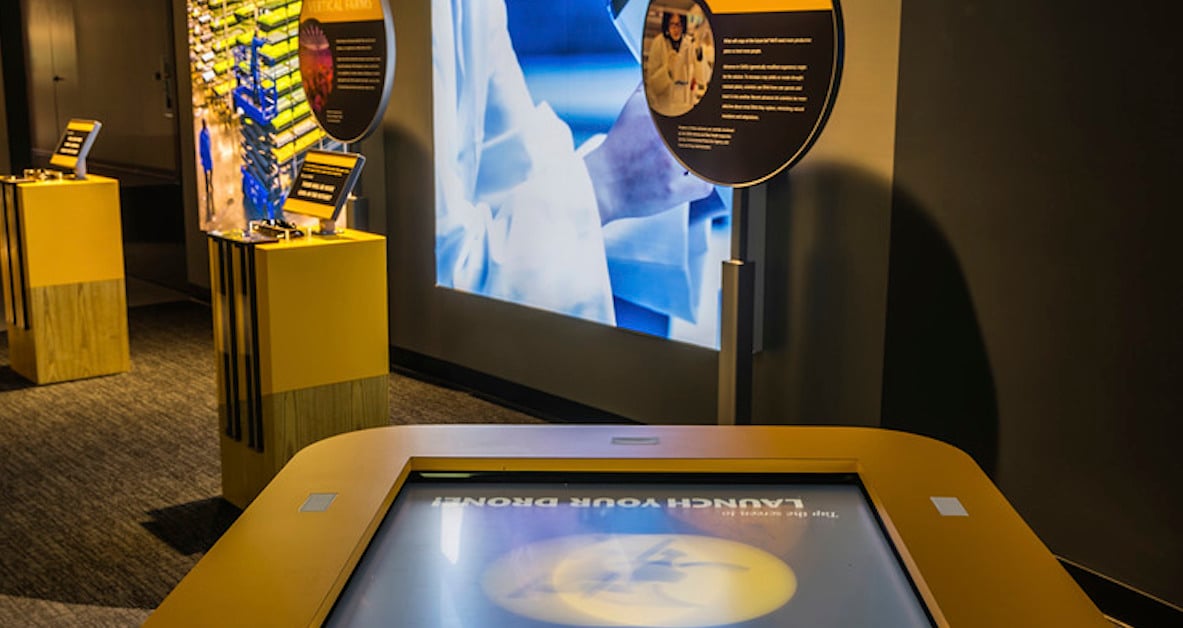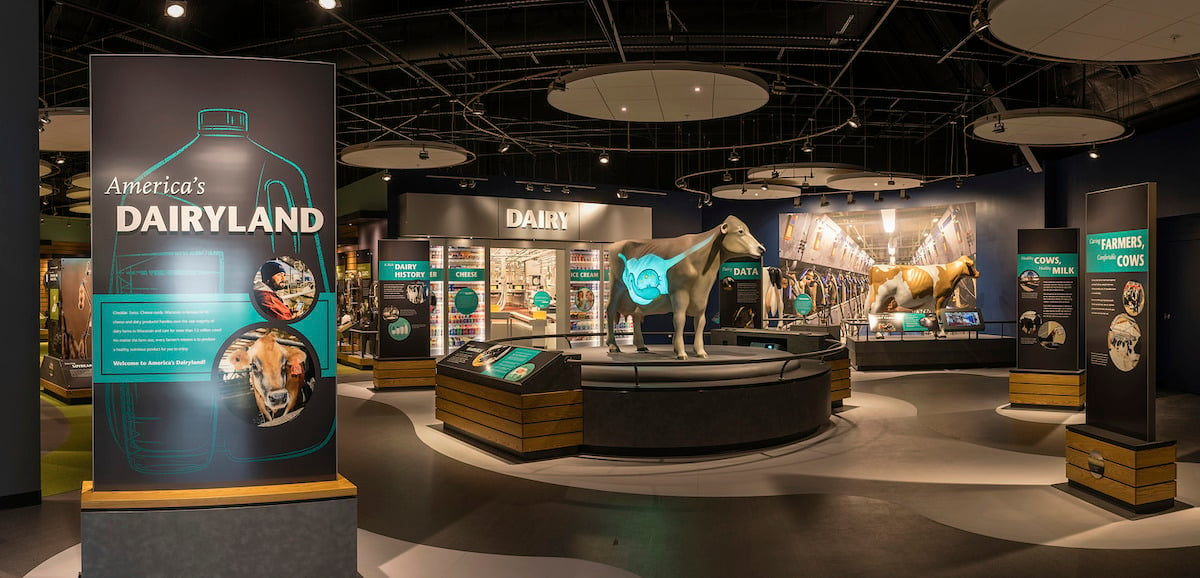
3 Steps to Educating with Immersive Technology
We live in an environment where technology has placed access to information at our fingertips. Wherever we are our mobile devices and search tools like Google can provide us answers to just about any question within minutes.
Of course, for many having instantaneous access has also stripped some of the zeal out of learning. Why expand your horizons when you can always find the answer? Simply put, not all information is available on the web is accurate or more commonly fails to give the full story.
This is where properly designed and deployed audiovisual (AV) technology can create educational environments that not disperse knowledge, but also create immersive experiences.
Step 1: Start with captivating content.
When content has a hook, it encourages engagement. A good way to accomplish this goal is to start with a few facts that people may not realize. Consider, for instance, one of the facts that Farm Wisconsin Discovery Center shares about agriculture. Only two percent of the people produce the food consumed by the other 98 percent.

After you get the guest’s attention with a simple stat, the opportunity exists to discuss deeper topics that explain the story in more detail.
Step 2: Leverage tech to engage and entertain.
After a guest realizes the opportunity to learn, use technology to make the experience fun and totally immersive. Set goals with each learning opportunity and think about which technologies make the most sense in conveying the message.

Going back to the Farm Discovery example, the use of kinetic sand encourages guests to play an interactive role while learning about irrigation. Or the use of an interactive display to demonstrate how intriguing technologies such as drones are currently utilized in the industry. Or even the use of projection mapping on a cow to help people better understand farming.

Today’s media display technology provides a wide array of new opportunities to engage. The key is to align the right technologies with the applications that captivate your guest.
Step 3: Expand the Engagement
The learning does not – nor should it – end when a guest leaves your facility. This is true whether it’s a museum, themed destination or even a corporate experience center. Social platforms and personalized engagements that encourage visitors to use their mobile devices throughout a visit should empower you with enough information about the guest’s interests to continue a conversation for months to come.

Remember, in the today’s digital economy, experiences take precedent. And this evolving information consumer puts significant value in relationships with those who take the time to create memorable experiences.
Are you looking for ways to better utilize technology to educate your guests or tell your story? With over five decades of designing and deploying truly immersive environments, Electrosonic has the experience and expertise to help you create an educational oasis. Click here to learn more.
Victoria Cosgrave
Victoria Cosgrave, Field Marketing Manager, Enterprise at Electrosonic, has wide-ranging experience of technology within professional services, financial services, infrastructure, transport, pharmaceuticals and government. Her knowledge and experience enables her to write about the technological landscape and the issues facing clients with great insight.










.jpg?width=1500&height=995&name=ELC501_N17_medium%20(1).jpg)







































































































































































































